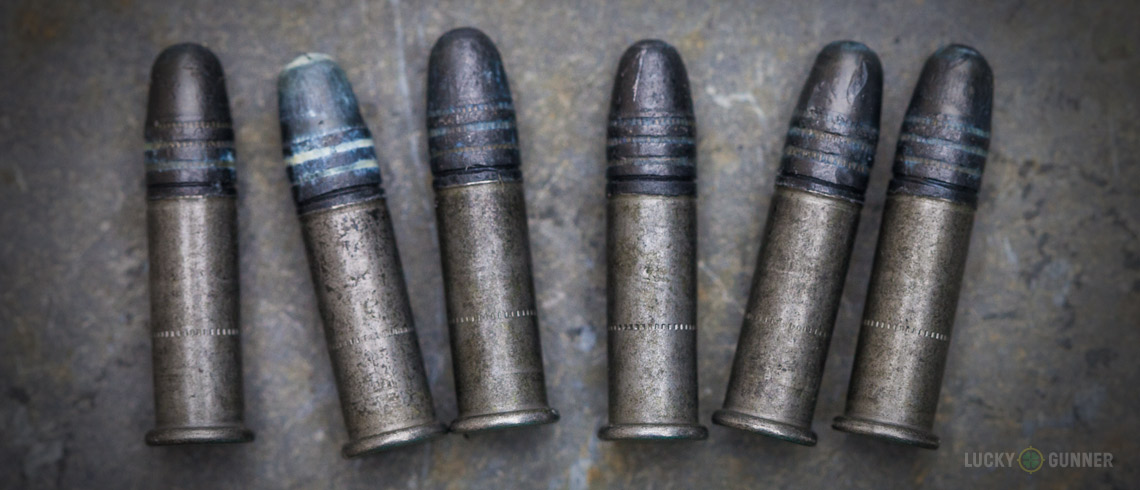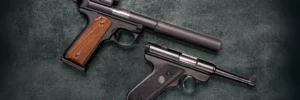Having been in the ammo business for over six years now, we’ve seen a lot of… interesting products come through the doors at Lucky Gunner. Most of the ammo we sell is newly manufactured, but sometimes we’ll have a chance to pick up some military surplus or new old stock ammo. Usually, this stuff has been sitting around in a climate controlled warehouse for a number of years, and is just fine to shoot. Ammo doesn’t have an expiration date, so as long as its been stored properly, it’ll function as it was originally intended.
But every once and a while, we’ll run across something special. And not necessarily the good kind of special. One of our supply chain guys recently saw an unusual looking box of .22LR on the shelf at a local gun shop. The dude behind the counter showed him that it was Russian steel-cased ammo from the 1990s. The ammo, marked “Junior” in big letters on the front of the box bears the LVE logo, a Russian ammo plant that we’re familiar with.

While the supply of .22LR ammo has been generally improving lately, we’re always looking for new sources wherever we can, so our guy bought a box of the vintage plinking ammo. If it turned out to be decent stuff, we’d send our purchasing detectives out into the wild to try to track down more.
Initial Inspection
Steel cased .22LR is a rare sight in the US, although it is supposedly common in Russia and elsewhere around the globe. In general, steel cased ammo gets a lot of criticism, but not all of it is deserved. All other factors being equal, steel cased ammo will function just as well as brass cased ammo 99% of the time. The problem is that “all other factors” are usually not equal. The problems sometimes experienced by users of steel cased ammo can often be attributed to the bullets, propellant, or load recipe used by the manufacturer, but not the steel case itself (see our epic steel vs. brass cased ammo test over at Lucky Gunner Labs for more).
In theory, if steel cased ammo can be loaded to the same specs as brass cased ammo, it should work in most firearms. But the only way to find out if that’s the case with the LVE “Junior” ammo, was to try it.
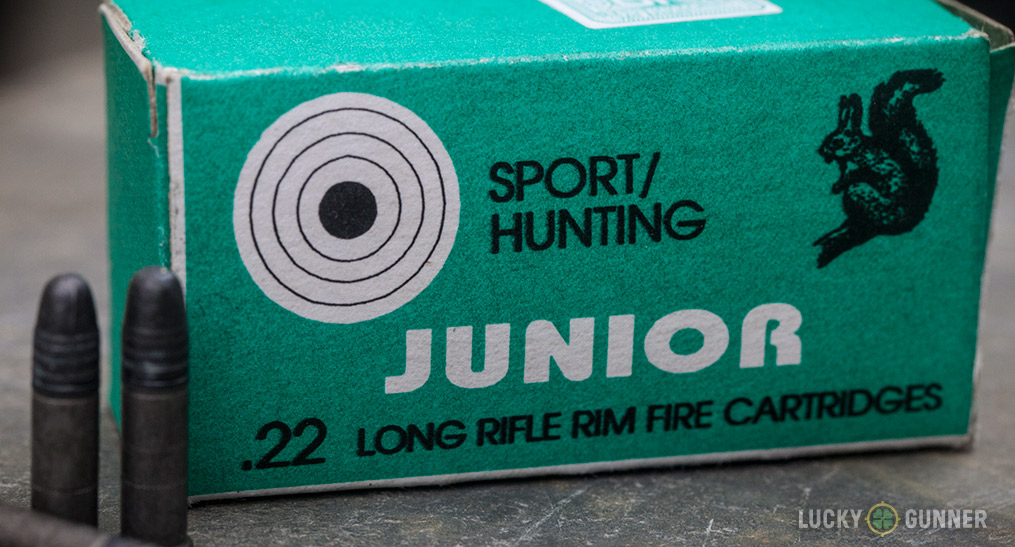

So, the 50 round box was passed along to me for testing. It does have a unique appearance, even before opening the box to examine its contents. The graphics looked like something from an American hardware store in the 1960s, but instead it was Russian and stamped “02-94” on the inside (a date stamp?). The box itself was in immaculate condition, but the ammo inside had seen better days.

EDIT: Mystery solved by Oleg Volk. The stamp reads “E 10-02-94” or Feb. 10, 1994. Thanks, Oleg!
Despite the waxy coating on the lead round nose bullets (a common lubricant for .22LR ammo), several of them showed a white residue, an indication that the ammo may have been stored in a less than ideal location . However, the steel cases didn’t seem to be in bad shape, though they did look a bit dirty.
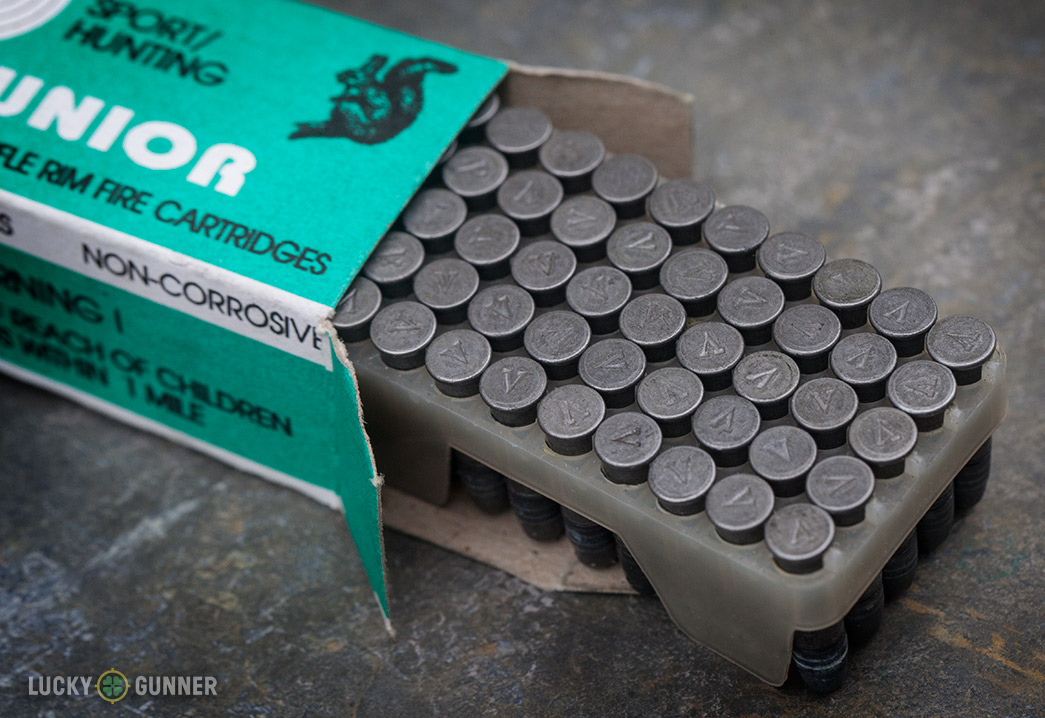
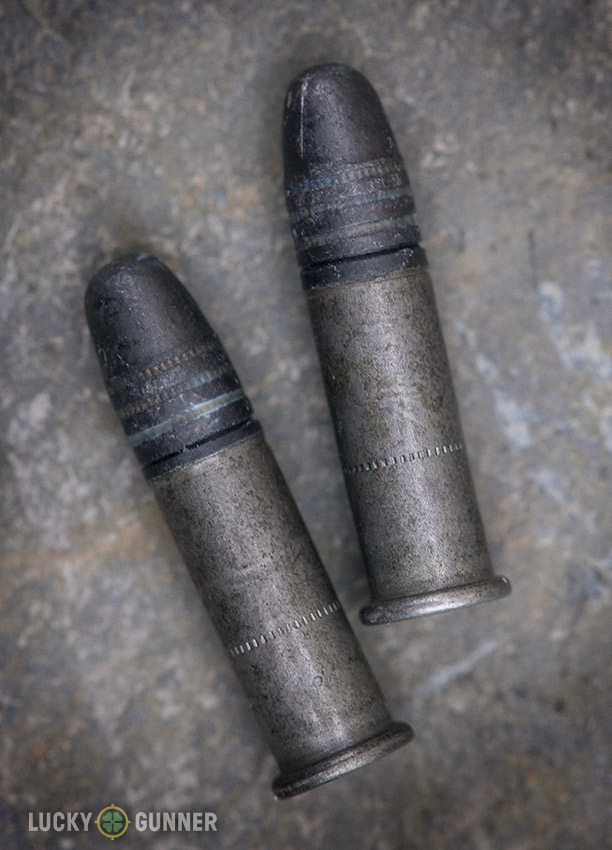
We’ve sold and shot LVE ammo before, with very few complaints. It’s not exactly Hornady Match or anything, but certainly usable plinking ammo. So despite being in less than perfect condition, the Russian 22 looked promising, and came from known origins. I’ve been working on an upcoming review of the Ruger LCR-22 revolver, so I grabbed the box of Junior on my way out the door to a filming session at the range.
The Eight-Shot Ammo Test with Steel Cased .22 LR Ammo
One of the great things about .22LR revolvers is that they’ll run just about any kind of ammo you can get your hands on. There’s no slide or bolt for the ammo to cycle, no feeding issues to consider, and even the most anemic .22 loads will usually find their way out of the short barrels, leaving very little chance of squibs. I brought along a few other .22LR rifles and pistols to try with the Russian ammo, but decided the LCR-22 would be the first guinea pig.
After I finished filming what I needed for the LCR-22 review, I left the camera running and loaded up 8 rounds of the LVE Junior steel cased .22LR. I could describe what happened next, but the video tells the story much better (make sure your sound is on for this one):
Yep, you heard right. It was musical ammo. The charge in each round varied enough so that there was an audible difference in the sound from one shot to the next. Of course, an intelligent person would have stopped firing after the first odd-sounding shot, but my love for our customers’ education outweighs my common sense, and I kept on firing… just for you, friends (I also saw bullet holes appearing in the target, so I knew none of the weak loads were actually squibs)
But after the last shot, I decided the test was over. That “pok” you heard instead of a “bang” was the sound of the primer going off, but failing to ignite the powder. Because the LCR-22 barrel is a mere 2 inches long, the bullet didn’t get stuck, and flew on to strike the target… two feet low. I’m surprised it even had that much force behind it, but it still wasn’t enough for the bullet to make it all the way through the cardboard.
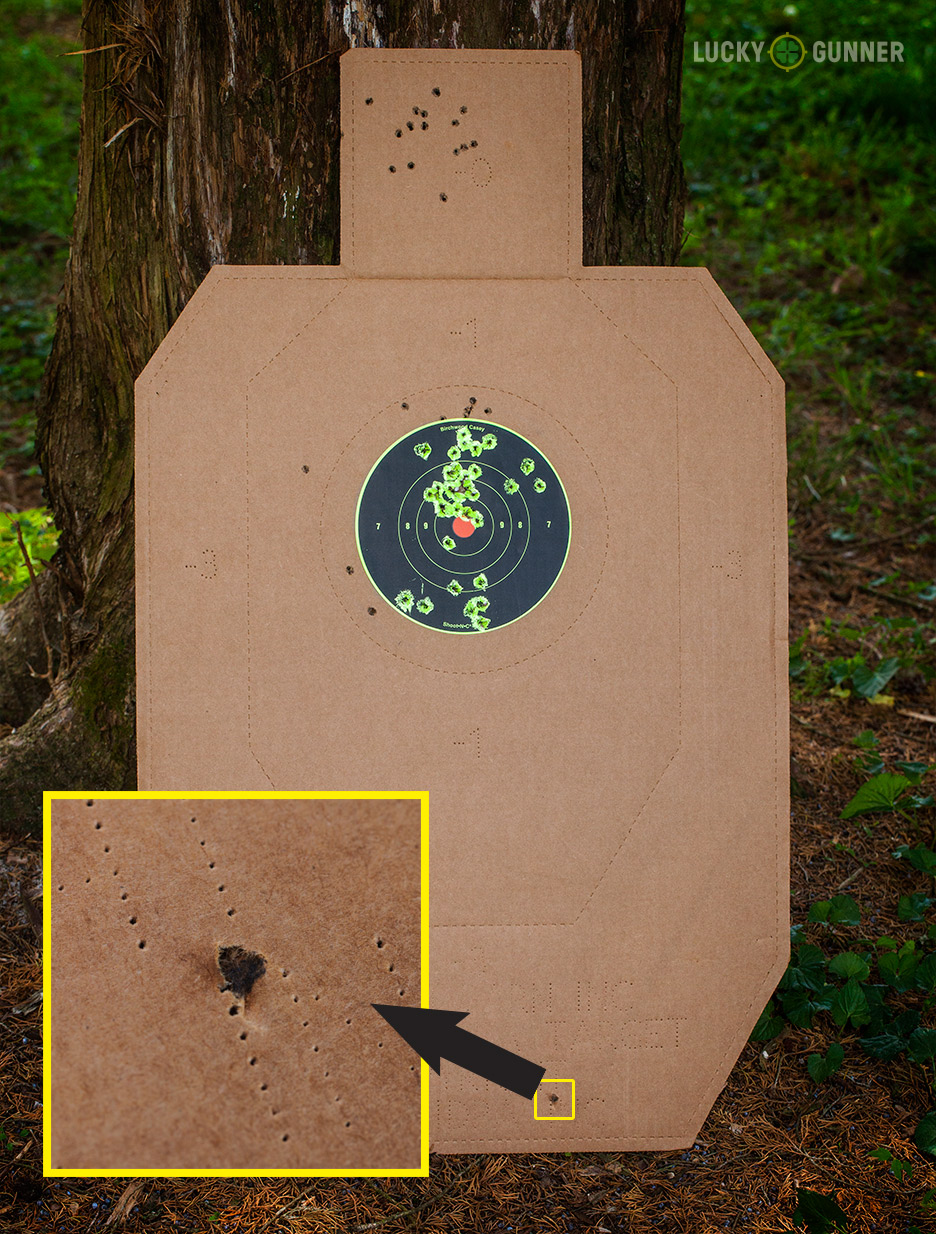
When I proceeded to eject the shells from the chamber, only four of the eight fell out. The other four were stuck, and it took some extra “encouragement” on the ejector rod to get them to pop out. Congratulations, Crappy Old Ammo, you nearly managed to break one of the most reliable .22LR firearms in current production!
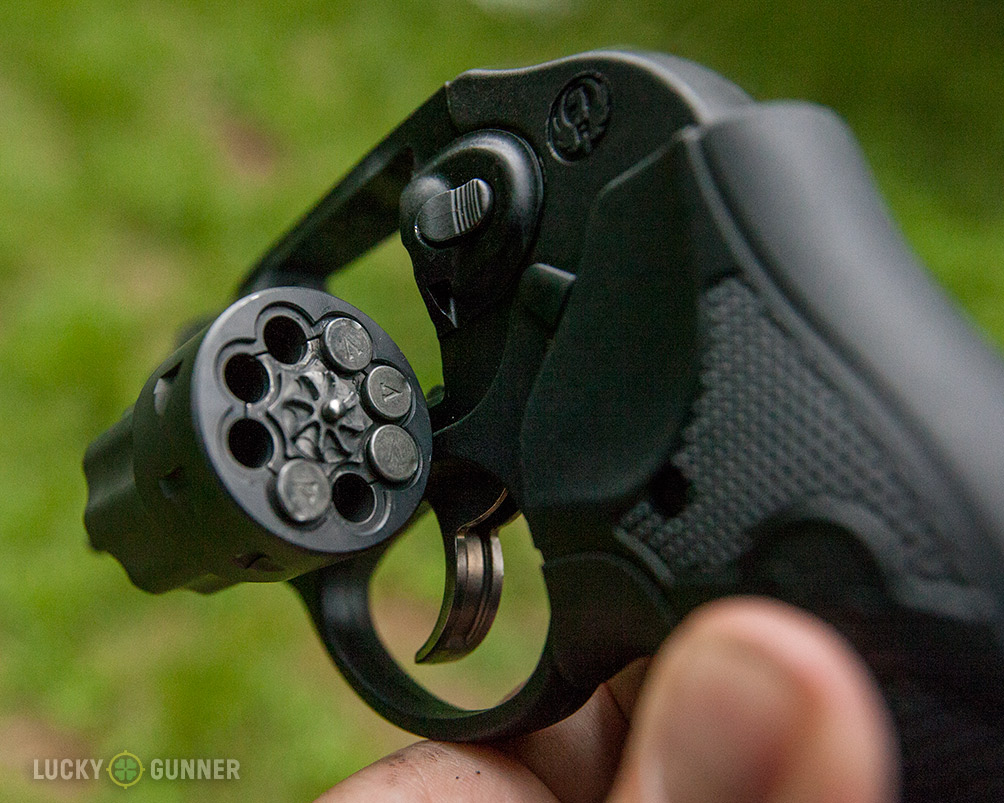
Because I value my health and really like my other guns, I decided not to press my luck and ended the test right then. Eight rounds was enough to tell me everything I needed to know about this ammo. I’m sure that at one time, LVE made perfectly sound steel cased .22LR ammo, but whatever warehouse this stuff has been stored in for the last 20 years must have lacked an adequate dehumidifier, because it’s obvious the integrity of the propellant in this ammo has been seriously compromised.
Will Lucky Gunner ever sell steel-cased .22LR ammo? We certainly won’t rule out the possibility if we find a good batch somewhere, but it won’t be from this one.
